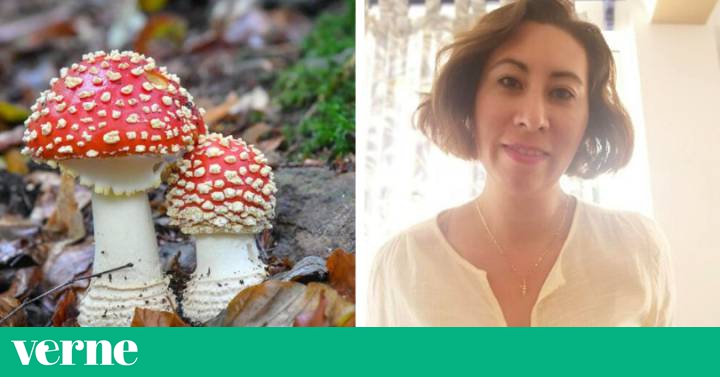The photo gallery on Sandra Castro's cell phone is full of images of mushrooms. This mycologist biologist is a professor at the Faculty of Sciences of the National Autonomous University of Mexico (UNAM) and for a year she has been behind the @Fungi_Cosas account on Twitter, a space for scientific dissemination of the world of fungi, followed by more than 28,000 people.
Every day dozens of photos of micro-fungi and macro-fungi arrive at the Fungi Cosas mailbox with the interest of knowing what are those rare specimens that suddenly appear in a pot, the garden or in spoiled food from the refrigerator. "People are fascinated to know what genus are the mushrooms that come out of their tuppers and their food," explains Castro, 39.
Belonging to their own kingdom and far from the world of plants, fungi are essential for the survival of ecosystems. "They are more related to animals than plants," he says. "They are the kings of degradation of decomposing organic material. They feed the nutrients from the food back into the soil. Without them 90% of the plants could not survive ”, he points out.
🍍A whole world fits in a pineapple! 🍍
Hahahaha it's great 😃 at least 5 species are there, between # mitosporic and # mucoráceos, like #Penicillium #Mortierella.
For the little admirer rico a rich chocolate and strawberry ice cream with vanilla chips and a coconut cookie🍨🍧 https://t.co/qKfLKXf5bf
Sometimes strange species arrive, forcing the mycologist to investigate more closely what species it is and to synthesize the information in an interesting way. “The other day they contacted me because a person consumed mushrooms and went to the hospital. Luckily she came out unscathed, she only took the scare and the diarrhea but it is important that they do not trust the myths to distinguish whether or not a fungus is edible, ”she points out.
Castro says he has heard all kinds of legends. That if the colors are very bright the mushroom will be poisonous or that if it changes color it should not be eaten. It categorically assures that these widespread beliefs are "false" and invites to trust the specialists with great experience in the consumption and handling of mushrooms to know which ones are edible.
Hello @PabloEmiioLujan! Thank you for sharing 😃
The genre #Amanita is very well represented. On the left one edible 😋 and on the right a toxic one ⚠️ https://t.co/wsNWFLwOPT
In Mexico there are around 200,000 species of macro and micro fungi. Fungi Cosas points out that we only know 8% of them. The macro-fungi among which are the genus amanita, boletus or the huitlacoche that grows in corn, there are about 300 species known only in Mexico. "The deadliest fungus in Mexico is known as 'angel of death' are the amanita verna, amanita virosa and the bisporigera amanita. All three are white, very thin. Beautiful but deadly mushrooms. A little piece could have very serious consequences, from needing an organ transplant to death, "says the mycologist.
Hello @awitade_limon! Thanks for sharing 😃
I really like these mushrooms, I've always thought they look like snowflakes 🤭❄️
It is likely that they are from the genus #Parasola. https://t.co/Q4BrBNd5Ge
A repeated consultation has to do with hallucinogenic mushrooms, very abundant in Mexico. "It is a delicate subject because it is forbidden to make any use of hallucinogenic mushrooms, but many indigenous peoples continue to use them as part of their tradition." Also known as neurotropic fungi or psychoactive fungi, its main compound is psilocybin. "This substance acts in a very similar way to serotonin in our body, which is responsible for giving us feelings of joy, happiness, joy but also anger. This type of fungus magnifies our sensations ”, he explains.
Hello @pepe_black! Thanks for sharing 😃
They look close to the #Panaeolus genus and indeed, they get to be confused with the #Psilocybe genre, for example 😁 https://t.co/kjGPSYSAxb
Since she began to make publicity from @Fungi_Cosas, Sandra Castro has realized that the idea and the knowledge that users had of mushrooms has changed “at first they said how disgusting, it made me nauseous , now the language is different. People say to me, I'm waiting for something to come out of my fridge to write to you . "
Follow Verne México on Facebook, Twitter and Instagram and don't miss your daily ration of Internet wonders.

